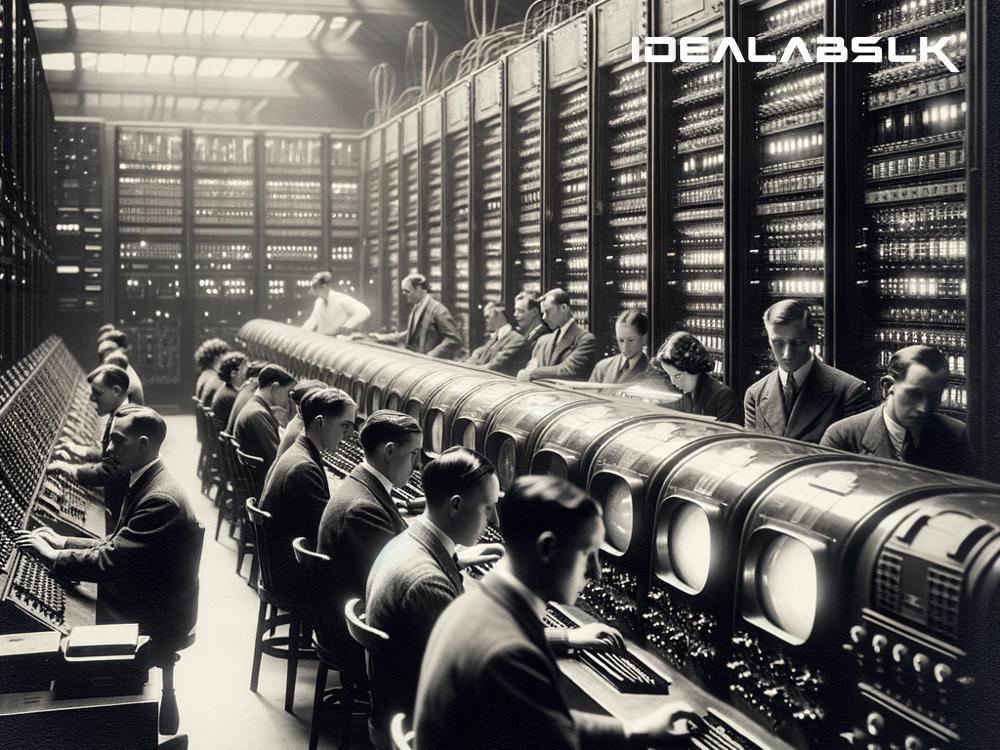From Humble Beginnings to Digital Titans: The Evolution of Data Centers
The story of data centers, the giant facilities that power our digital world, is a fascinating journey. It starts from modest beginnings and evolves into the backbone of modern technology. Let's dive into how data centers came to be and their dramatic evolution over the years.
The Dawn of Data Centers
The concept of a data center can trace its roots back to the 1940s. Yet, the term "data center" wasn't commonplace until much later. The earliest versions were rooms housing huge, mainframe computers that were essential for scientific calculations and business operations. These machines were massive, taking up entire rooms, and required a unique environment to operate efficiently, including controlled temperatures and dedicated power sources.
One of the first recognizable data centers was created for the U.S. military in the late 1940s. It was designed for the ENIAC (Electronic Numerical Integrator and Computer), one of the earliest electronic general-purpose computers. Imagine rooms filled with vacuum tubes, punched card readers, and reels of magnetic tape. This setup marked the humble origins of what would become the modern data center.
Growth and Global Expansion
As technology advanced, so did the need for more sophisticated data handling facilities. The 1960s and 1970s witnessed the proliferation of mainframe computers, pushing the concept of data centers into the corporate world. Businesses started to create their own dedicated spaces to manage and store vast amounts of data. These were the precursors to our current data centers, with racks of servers, backup power supplies, and air-cooled systems.
The introduction of the personal computer in the 1980s and the explosion of the internet in the 1990s transformed data centers from corporate resources into critical components of the global infrastructure. The demand for Internet services, like email and web hosting, required more advanced and resilient data centers. This era also saw the introduction of the "client-server" model, shifting the data processing workload from local machines to centralized servers housed in data centers.
The Modern Data Center
Entering the 21st century, data centers have become more than just places to store and process information. They are the engines of the internet, cloud computing, and virtually all large-scale IT operations. Modern data centers are marvels of engineering, designed for efficiency, security, and scalability. They range from small, on-premises rooms to massive warehouse-sized buildings used by tech giants like Google, Amazon, and Microsoft.
One significant change in recent data center evolution is the focus on energy efficiency and sustainability. Early data centers were notorious energy hogs, with a vast carbon footprint. Today, there's a strong push towards green data centers, powered by renewable energy sources and employing advanced cooling technologies to reduce environmental impact.
Cloud Computing and Beyond
The latest chapter in the data center story is the rise of cloud computing. Rather than businesses and individuals maintaining their own data storage and processing facilities, they now rent these services from cloud providers. This shift has led to the consolidation of data center operations into fewer, but larger and more powerful, facilities managed by leading tech companies.
The future of data centers seems intertwined with advances in technology such as artificial intelligence, the Internet of Things (IoT), and edge computing. These will drive the need for data centers to become even faster, smarter, and more distributed, with an ongoing emphasis on sustainability.
A Look Ahead
The evolution of data centers reflects the incredible journey of technological progress over the past 80 years. From rooms filled with clunky mainframes to sprawling complexes that power the cloud, data centers have come a long way. As we continue to push the boundaries of technology, data centers will evolve, accommodating new needs and addressing emerging challenges.
The data center, once an obscure component of the IT infrastructure, is now firmly at the heart of the digital age. Its evolution is a testament to human ingenuity and a reminder of the ever-growing demand for data processing and storage in our connected world.
In weaving this tale of data centers from their inception to the futuristic visions that lie ahead, it's clear that their evolution mirrors the broader story of technological progress. From military rooms to green-powered cloud hubs, data centers continue to adapt and grow, fueling the digital revolution and transforming our world in ways we're just beginning to understand.

